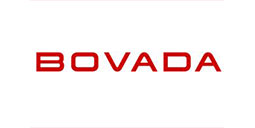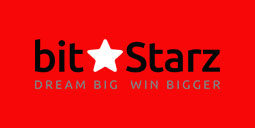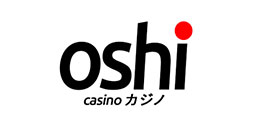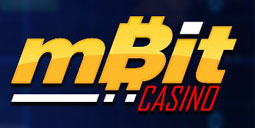Fake Majority On Crypto Exchanges Isn’t the Half of It
Credit is due to Bitwise, a company in the crypto space carrying time and effort to perform this research to assist regulators. However, the image provided is incomplete.
All exchanges in the report are enrolled Money Services Business with FinCEN, except for Binance, which makes up by far the most — 40.47percent of the total “real ” crypto volume exchanged.
To further confirm that the report’so analysis, there is a reference to a team called the Blockchain Transparency Institute. Claiming “a standard institutional comprehension of the true nature of the true marketplace,” the report cites the Institute and its research in identifying 56 exchanges with fake volumes.
In reality, even the report acknowledges Tether isn’t a stablecoin in any way.
It needs to be applauded Bitwise set up this presentation.
Recently, a report has been produced by Bitwise Asset Management demonstrating the presence of faked volumes from the bitcoin marketplace — 95 percent of total volume according to its study. It’s hard to disagree with a number of the facts in this report. Yet there are a number of items left out in this presentation to the SEC.
A quick glance at the “Partners” page at the Institute’s website reveals a fascinating detail: Bitwise Investments, writer of the SEC report, is recorded as an “investor class supporter. ”
However, this market isn’t complex and there are crucial issues that the report simply doesn’t address.
Problematic Exchanges Outside of the 95 percent
The report states that Binance and Bitfinex comprise over 50 percent of the whole bitcoin spot volume. Yet neither of these two exchanges have normal banking relationships such as others in the report do.
Nevertheless these exchanges lack regular banking associations and are encouraged by an untrue stablecoin
Nevertheless it’so likely to take time, and it’therefore likely to require patience. Surely the authorities realize that by now.
Bitcoin isn’t a mature, stable marketplace when two exchanges with banking — and supported through an un-auditable, unregulated stablecoin — comprise half the “actual ” cryptocurrency trading volume.
Puzzle piece through Shutterstock
Someone needed to comprehensively detail the amount of wash trading cryptocurrency exchanges are conducting.
…but leaves specific information from these 2 exchanges which have over 50 percent of “actual ” volume, like on this particular histogram slide.
It is designed, as specified in its white paper, to utilize something called “Proof of Reserves” backed with the US dollar, to be pegged to USD.
2. Do you know the two largest exchanges in the accounts, Binance and Bitfinex, perhaps not more carefully studied for their relationship with Tether, an untrue and unaudited “stablecoin? ”
Citing “sophistication,” an auditing firm hired to verify Tether’s “Proof of Reserves” has been terminated — it’s never had an external auditor complete this procedure. And for example Bitfinex, Tether has also had its share of banking issues. That shouldn’t be so unexpected — Bitfinex and Tether seem to be quite tightly interrelated.
It cannot be disputed that there are problems with exchanges reporting fake volumes. It’therefore hard to argue CoinMarketCap isn’t complicit in reporting false crypto volumes. However, more questions will need to get asked about 2 exchanges recorded in the Bitwise account as having “Actual Volume. ”
Both exchanges have important regulatory problems which produce their inclusion in this presentation to SEC about. Binance, as an example, was financed by an ICO, supported with a token which looks much like a safety and has not been in a position to get standard banking partnerships. Bitfinex has experienced major banking difficulties, losing a number of relationships — even exceeding Wells Fargo at one point.
Binance and Bitfinex alone make up 54.41percent of “actual ” volume in line with this presentation.
Why didn’t Bitwise disclose it’s a preexisting relationship with the Blockchain Transparency Institute on its report?
The report into the SEC lists Binance and Bitfinex as two of those 10 exchanges who have actual crypto quantity …
1. What’s Binance known as one of those exchanges that makes up the so-called “real economy ”?
Interestingly, there’s very little transparency about who runs on the Blockchain Transparency Institute. There’s not any listing on its site of who is handling this class, who is on its board if it is a non-profit or details on the plan of its study.
Both of these also utilize Tether.
Daniel Cawrey is currently CEO of both Pactum Capital, a cryptocurrency investment firm focused on market liquidity and making. Previously a CoinDesk Contributing Editorhe is author of the upcoming “Assessing Blockchain” publication to be published by O’Reilly Media.
3.
Half of the “real ” BTC volume inside this report is completed on exchanges without a banking connections and not enough in the way of compliance. This shows there is still a great deal of growth left on the marketplace before bitcoin gets older. It will happen, and it’s going to be on the advantage of everyone involved.
Fundamentally, each Tether is assumed to be backed by a dollar in a bank account somewhere. According to the report from the prosecution part of its presentation, audits in crypto ought to be easy to do.
It’s hard to warrant bitcoin is an older strength and has a sophisticated marketplace supporting it. And despite the artificial volumes round crypto exchanges, this presentation makes a compelling argument there is maturity.
The Tether Problem
Problem isthere’s never been an audit completed for Tether.
This ’s not what Tether is assumed to be. It’therefore assumed to be pegged to USD. And it is used by Bitfinex and Binance to avoid having to meet the true regulatory and banking compliance job that entails.
Fake Majority On Crypto Exchanges Isn’t the Half of It - July 2025
EXPERTLY REVIEWED
MOBILE FRIENDLY
FAST PAYOUTS
- CasinoRatingBonusVisit Casino
Get your 100% Match Bonus up to $1000!
200% match bonus up to 2000
Up to 5 BTC
100% match bonus + 180 free spins
Get up to 1 BTC on First Deposit!
Welcome bonus up to 1.5BTC + 250 free spins
Get your 5 BTC Welcome Bonus
Top Rated







Search
Casino List
- Bovada Casino
- 7bit Casino
- Bitstarz Casino
- Sun Palace Casino
- Ignition Casino
- Tangiers Casino
- Nitrogen Sports Casino
- Casumo Casino
- Fortunejack Casino
- Mars Casino
- Mbit Casino
- Cafe Casino
- Drake Casino
- Grand Fortune Casino
- CryptoReels Casino
- Wild Casino
- Betchain Casino
- Oshi Casino
- Bitcoin Penguin Casino
- Joe Fortune Casino
- Vegas Casino.io








